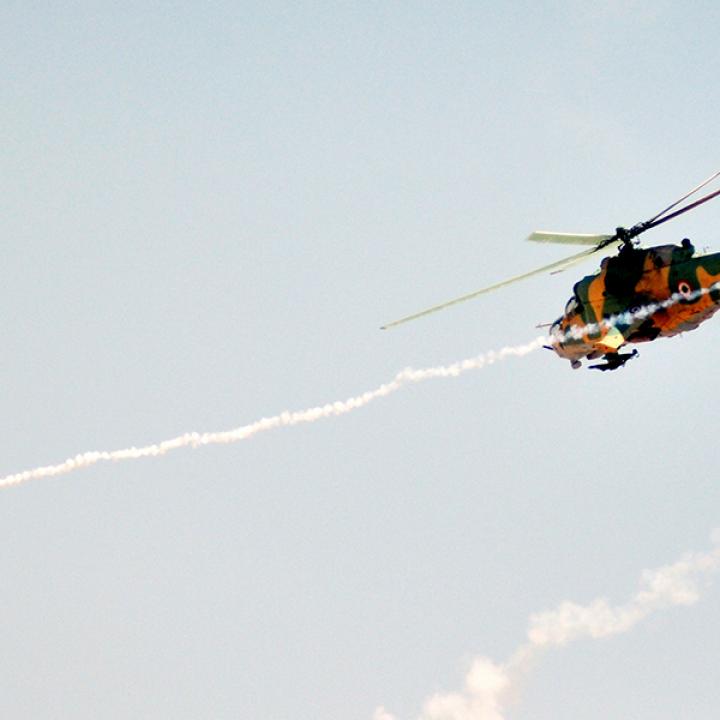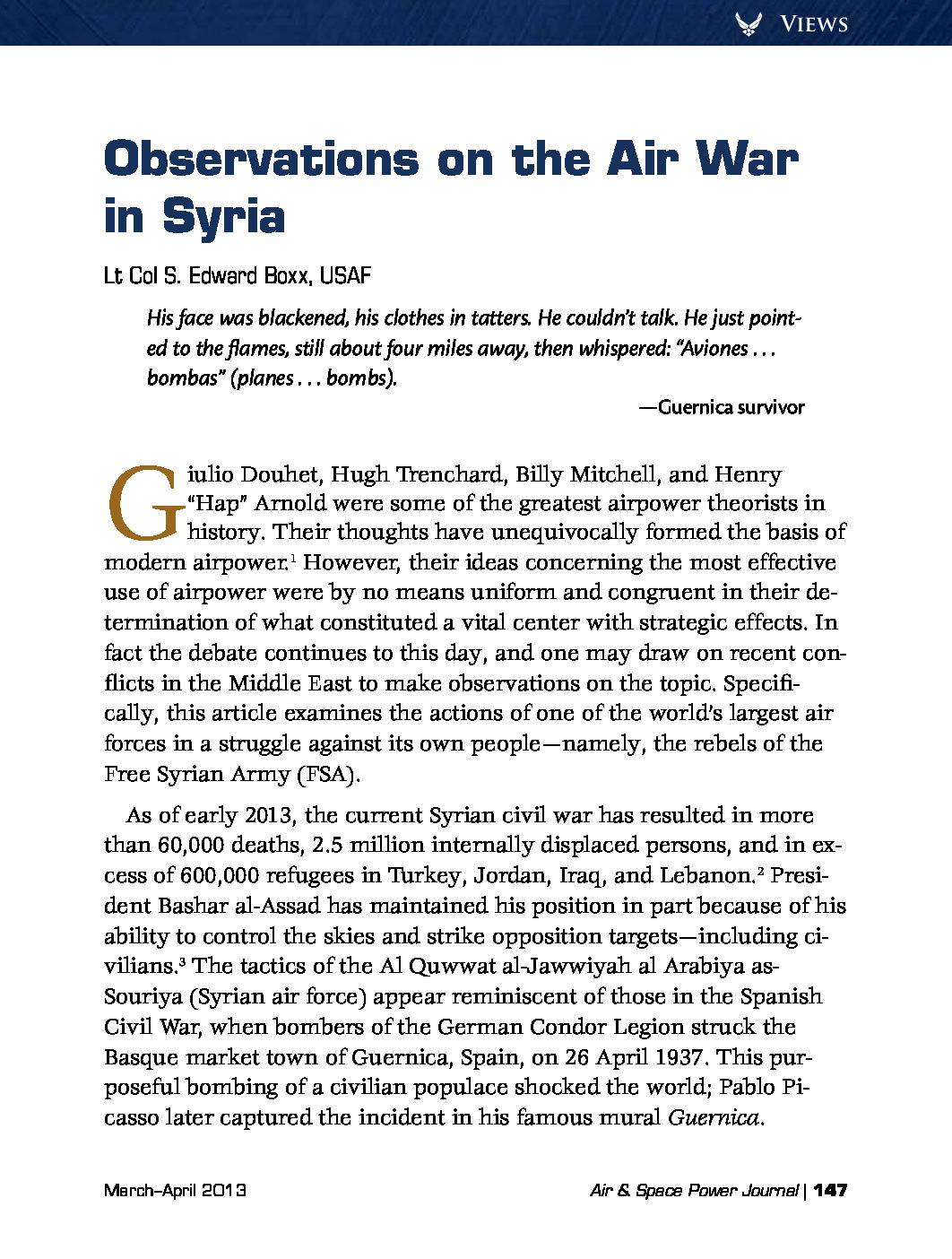

A military expert offers a comprehensive look at the Assad regime's past and current use of airpower against the Syrian people.
Giulio Douhet, Hugh Trenchard, Billy Mitchell, and Henry "Hap" Arnold were some of the greatest airpower theorists in history. Their thoughts have unequivocally formed the basis of modern airpower. However, their ideas concerning the most effective use of airpower were by no means uniform and congruent in their determination of what constituted a vital center with strategic effects. In fact the debate continues to this day, and one may draw on recent conflicts in the Middle East to make observations on the topic. Specifically, this article examines the actions of one of the world's largest air forces in a struggle against its own people -- namely, the rebels of the Free Syrian Army (FSA).
As of early 2013, the current Syrian civil war has resulted in more than 60,000 deaths, 2.5 million internally displaced persons, and in excess of 600,000 refugees in Turkey, Jordan, Iraq, and Lebanon. President Bashar al-Assad has maintained his position in part because of his ability to control the skies and strike opposition targets -- including civilians. The tactics of the Al Quwwat al-Jawwiyah al Arabiya as-Souriya (Syrian air force) appear reminiscent of those in the Spanish Civil War, when bombers of the German Condor Legion struck the Basque market town of Guernica, Spain, on 26 April 1937. This purposeful bombing of a civilian populace shocked the world...
PDF version reprinted courtesy of Air & Space Power Journal.
Air & Space Power Journal



